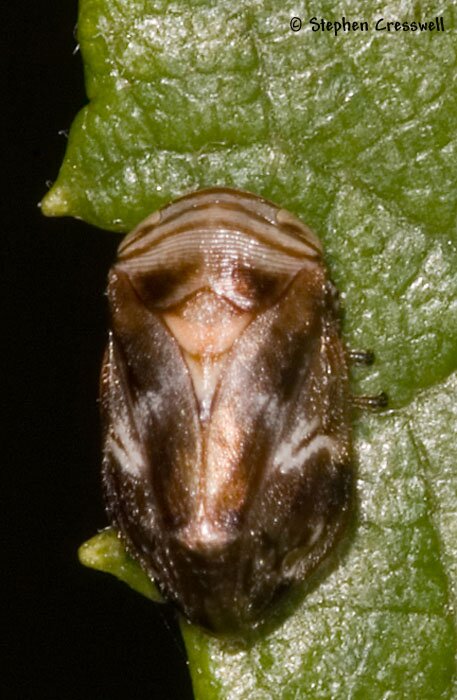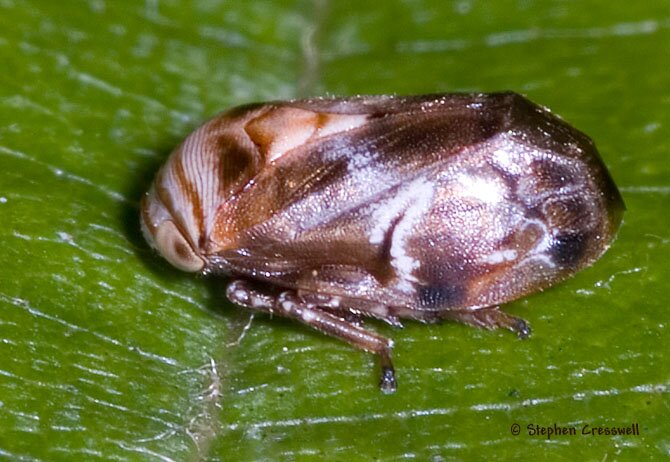
Family: Clastopteridae
Length: 4.0-5.5 mm
Adult Alder Spittlebugs are short and robust, the forewings covered in a pale pubescence. Between the antennae are a series of seven or so close-spaced dark lines. To the front of those are several broader lines.
A number of recent authors have elevated subfamily Clastopterinae to family rank, Clastopteridae.
Philip Garman conducted life history studies of Clastoptera obtusa in Connecticut in 1923. He found two broods per year, with the eggs of the first brood laid in September and October, and hatching in May. Eggs for the second brood were laid in July and took 12-21 days to hatch, depending upon temperature.
The eggs are laid just under the bark of Alder, and the slit in the bark is covered with what Garman called "a tough adhesive substance." Females lay 22-35 eggs.

The nymphs are fairly sedentary, remaining in their spittlemass for the most part. Unlike some other members of the Spittlebug family, Clastoptera obtusa does not undergo its final molt within the spittle, but instead leaves the spittle and molts to the adult stage in the open air.
Garman called the adults "sluggish," usually content to sit still and feed on the Alder shrub.
He reported that although the primary host plants of Clastoptera obtusa are species of Alder, the insect has also been reared on Witch Hazel, Hickory, Gray Birch, and White Birch.
Other pages with information on this genus include the Clasoptera proteus page, and a page with drawings of nymphs of Clastoptera obtusa.



